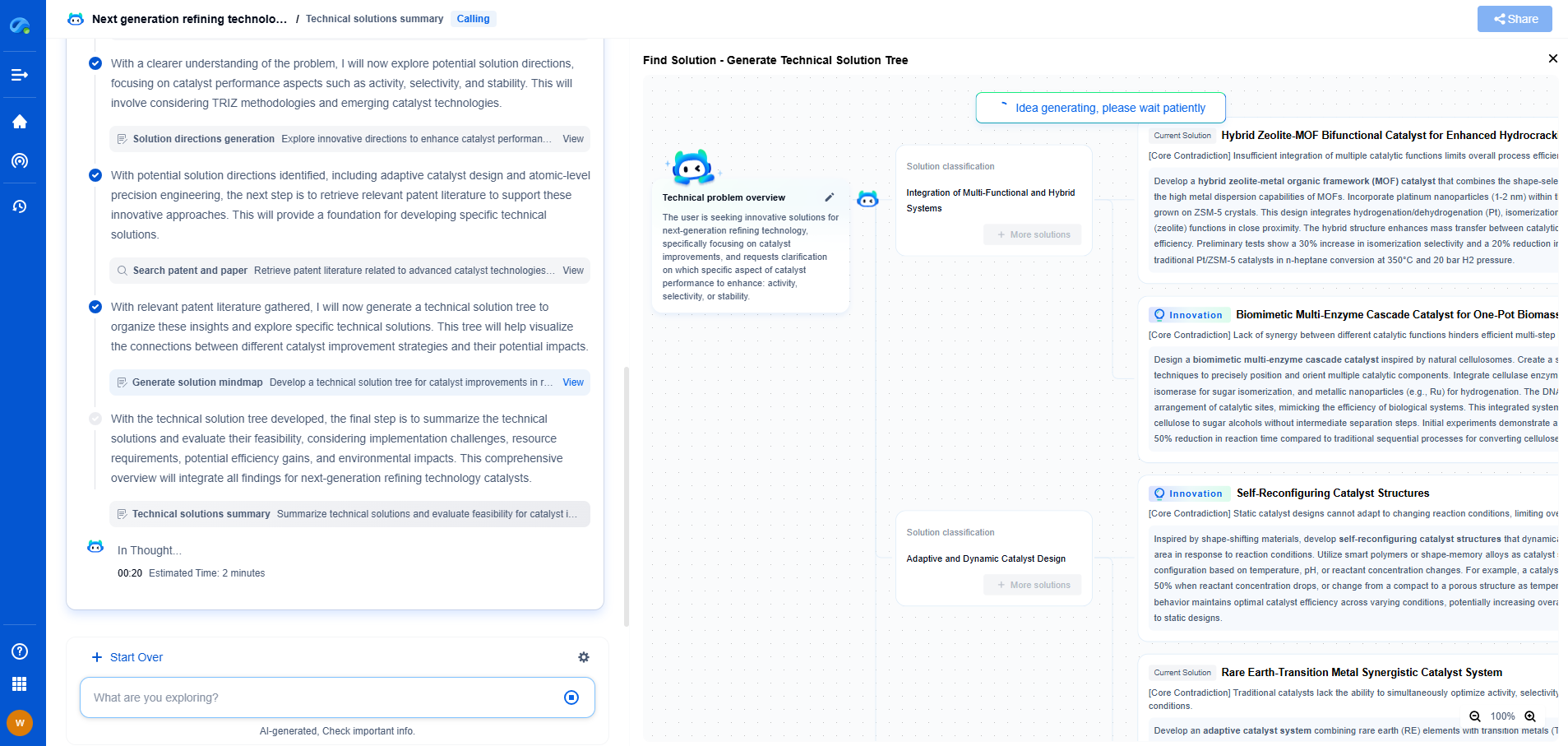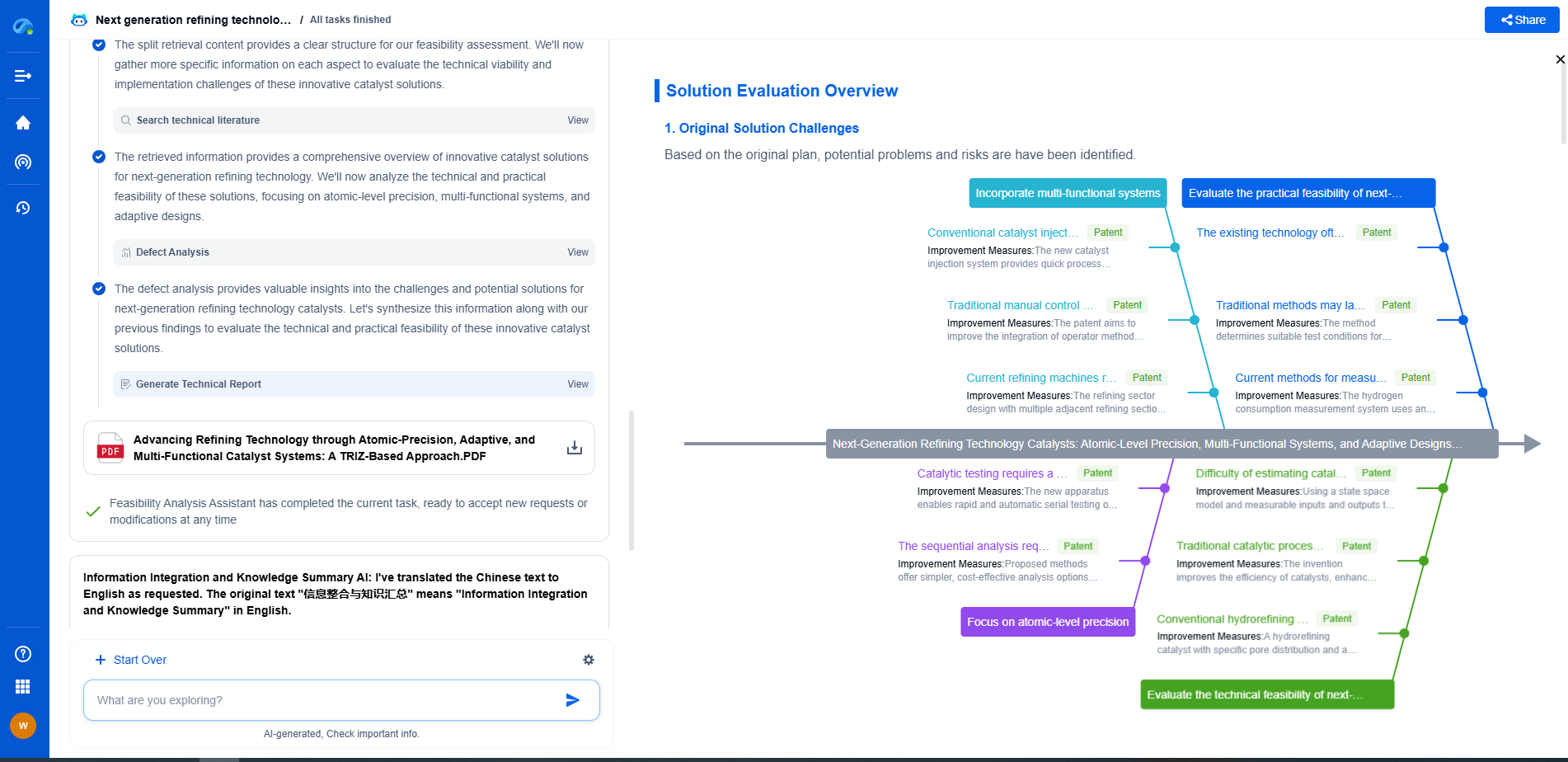How Pressure Sensors Operate in Cryogenic and High-Pressure Gas Systems
JUL 21, 2025 |
Pressure sensors are pivotal in various industrial applications, especially when working with cryogenic and high-pressure gas systems. These environments present unique challenges, requiring specialized technology to ensure accurate measurements and maintain system integrity. In this article, we will explore the operational principles of pressure sensors in such demanding conditions, discuss their types, and examine their applications.
**Understanding Cryogenic Conditions**
Cryogenic conditions involve extremely low temperatures, typically below -150°C (-238°F), which can affect the performance of standard pressure sensors. At such low temperatures, materials can become brittle, electronics may fail, and the properties of gases can change significantly. Therefore, pressure sensors used in cryogenic environments must be designed to withstand these conditions without losing accuracy or reliability.
One of the primary challenges is maintaining sensor accuracy despite temperature fluctuations. Sensors used in cryogenic applications often incorporate materials like stainless steel or nickel alloys, which have low thermal expansion coefficients. Additionally, these sensors might use piezoelectric or capacitive sensing elements that are less sensitive to temperature changes.
**Dealing with High-Pressure Gas Systems**
High-pressure gas systems operate under pressures that can exceed several thousand psi, which can be hazardous if not properly managed. In these environments, pressure sensors must be robust enough to handle intense pressures without failing. The design of these sensors often includes reinforced structures and advanced sealing technologies to prevent leaks and ensure safety.
In high-pressure applications, sensors might use strain gauge technology, where the deformation of a material under pressure is converted into an electrical signal. These strain gauges are typically bonded to a diaphragm that deforms under pressure, ensuring precise measurements. The materials used must be highly durable, often including heavy-duty metals or ceramics.
**Key Types of Pressure Sensors**
Several types of pressure sensors are suitable for cryogenic and high-pressure applications:
1. **Piezoelectric Sensors**: These sensors generate an electrical charge in response to mechanical stress. They are ideal for dynamic pressure measurements and are often used in applications where rapid pressure changes occur.
2. **Strain Gauge Sensors**: Utilizing the strain gauge principle, these sensors are highly accurate and can be used in both static and dynamic pressure conditions.
3. **Capacitive Sensors**: These measure pressure changes by detecting variations in capacitance. They are valued for their sensitivity and are often used in environments where low-pressure detection is critical.
4. **Resonant Sensors**: These sensors determine pressure by measuring the frequency of a vibrating element, which changes with pressure variations. They are known for their precision and reliability in extreme conditions.
**Applications and Real-World Examples**
Pressure sensors in cryogenic and high-pressure systems are indispensable in various industries. In the aerospace sector, they are crucial for monitoring fuel systems and ensuring the safe operation of rockets and spacecraft. The medical field uses these sensors in cryogenic storage of biological materials, where maintaining precise conditions is vital for preservation.
In the oil and gas industry, high-pressure sensors monitor and control the extraction and transportation of natural gas and oil, ensuring efficiency and safety. Liquefied natural gas (LNG) plants also rely heavily on pressure sensors to manage cryogenic conditions during the liquefaction process.
**Challenges and Innovations**
The development of pressure sensors for extreme conditions is an ongoing area of innovation. Challenges include enhancing sensor durability, improving accuracy in fluctuating conditions, and developing materials that can withstand both extreme cold and high pressures.
Recent advancements have seen the integration of smart technologies, allowing for real-time data monitoring and remote sensor management. These innovations improve reliability and allow for predictive maintenance, reducing downtime and operational risks.
**Conclusion**
Pressure sensors are critical components in cryogenic and high-pressure gas systems, enabling precise control and safety. As industries continue to push the boundaries of what is possible in extreme conditions, the development and refinement of these sensors will remain a vital focus. Understanding their operation and the challenges involved ensures that industries can continue to operate safely and efficiently in some of the most demanding environments on Earth.
As clean energy and decarbonization drive new breakthroughs in hydrogen storage, CO₂ transport, and alternative gas carriers, keeping pace with technical trends and patent activity is critical to staying competitive.
Patsnap Eureka helps innovators in compressed gas storage, high-pressure tank design, gas sensor systems, and pipeline materials accelerate research by offering instant, AI-powered insights into global patents, related technologies, and emerging white spaces.
🚀 Bring speed, precision, and strategic foresight to your innovation and IP decision-making in the gas transport sector—try Eureka today and unlock a smarter path forward.
- R&D
- Intellectual Property
- Life Sciences
- Materials
- Tech Scout
- Unparalleled Data Quality
- Higher Quality Content
- 60% Fewer Hallucinations
Browse by: Latest US Patents, China's latest patents, Technical Efficacy Thesaurus, Application Domain, Technology Topic, Popular Technical Reports.
© 2025 PatSnap. All rights reserved.Legal|Privacy policy|Modern Slavery Act Transparency Statement|Sitemap|About US| Contact US: help@patsnap.com

